 |
 |
 |
| |
Sex and race disparities in premature mortality among people with HIV: a 21-year observational cohort study - Premature Mortality Higher in Women and Blacks in US HIV Group
|
| |
| |
[see graphs, tables below - 73% risk overall of decreased mortality but disparities persist "especially in women...we see disparities in women and specifically Black women". Cisgender women had 25% increased risk for mortality compared to cisgender men. "When looking at the age adjusted years of potential life lost rates, premature mortality was significantly higher for females compared to males and for non-hispanic Black individuals compared to non-hispanic white individuals. Black women had the highest adjusted years of potential life lost. Adjusted years of potential years lost was higher for heterosexual females when compared to men regardless of their risk factor. Heterosexual women who died had an average of 5.5 years of more years of life lost than MSM individuals with HIV. Black adults who died had approximately 9 months more of life lost compared to white adults. Improving these disparities will be closely tied with addressing the social determinants of health that create and enforce these inequities, therefor our focus should be on the design and implementation of interventions that can address these factors of poverty, income inequality, access to healthcare, not only at the individual level but also at the community level."]
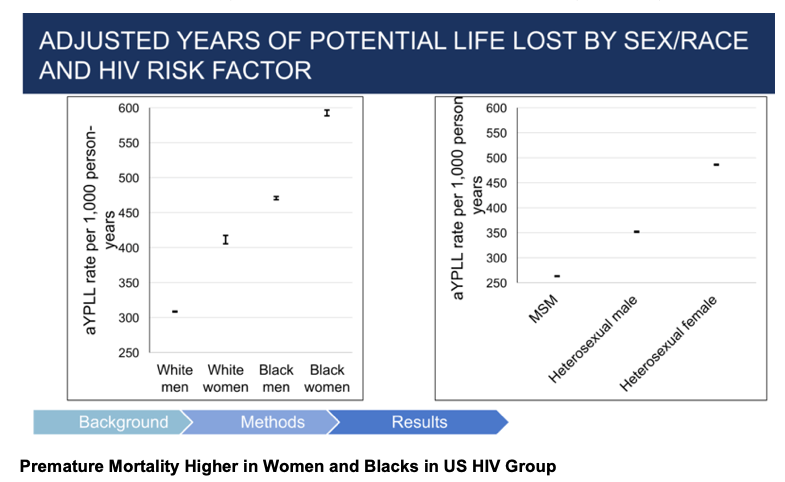
Premature Mortality Higher in Women and Blacks in US HIV Group
IDWeek, September 29-October 3, 2021
Mark Mascolini
Women in a US HIV group had a significantly higher premature death rate than men, while blacks had a significantly greater premature death rate than whites [1]. This 21-year 6531-person study at Vanderbilt University in Tennessee estimated that a 20-year-old woman with HIV faced 48.9 average years of potential life lost, compared with 43.3 years for a 20-year-old man who has sex with men (MSM) with HIV.
Among people with HIV in the United States, the age-adjusted death rate dropped by 36% from 2010 to 2018 [2]. Epidemiologists have begun to focus more closely on premature mortality-a way to estimate time lost by death at a young age as a measure of how disease affects mortality. In the general US population, premature mortality has dropped slowly from 1987 to 2018.
Vanderbilt University researchers noted that premature mortality remains poorly studied in people with HIV. Because different race- and gender-defined HIV groups differ substantially in time to HIV diagnosis, continuity of HIV care, and viral suppression rates, it seems likely that these groups will also differ in premature mortality. The Vanderbilt team conducted this study to test the hypothesis that "mortality rates have declined" in people with HIV, "but differences in race and sex persist in mortality and premature mortality."
This retrospective study involved HIV-positive people cared for at Nashville's Vanderbilt Comprehensive Care Clinic during the years 1998-2018. Over that period the researchers used univariate and multivariate Poisson regression to examine mortality trends by age, gender, race/ethnicity, HIV acquisition risk factor, and CD4 count.
The Vanderbilt team estimated years of potential life lost (YPLL) for each individual who died during the study period. For example, CDC life tables indicate that a 70-year-old woman who died in 1999 would have been expected to live an additional 15.4 years, while a 28-year-old man who died in 2017 would have been expected to live an additional 49.6 years. So potential years of life lost for those people would be 15.4 and 49.6. Then the researchers calculated crude and age-adjusted YPLL by direct standardization to the 2000 US census population; this method would account for the younger age distribution in people with HIV than in the general population. Finally, they used multivariable linear regression to identify predictors of YPLL.
Among the 6531 Vanderbilt cohort members, 51% were non-Hispanic white, 40% non-Hispanic black, and 9% other (including Hispanic). While 78.2% of the group were cisgender men, 21% were cisgender women, and 0.8% transgender women. By HIV transmission risk group, 56.6% were MSM or transgender women, 17.2% heterosexual cisgender women, 11.9% heterosexual cisgender men, 10.4% other/unknown/injection drug user (IDU) men, and 1.8% other/unknown/IDU women. Median age at clinic entry stood at 37.4 years overall and median CD4 count at 379. During follow-up 956 people (14.6%) died.
Mortality dropped from 1998-2003 through 2014-2018 in all HIV groups studied, regardless of age, sex, race/ethnicity, or CD4 count when entering the Vanderbilt clinic. An analysis adjusted for age, IDU history, anemia, HIV diagnosis year, AIDS-defining illness history, HCV coinfection, CD4 count, and HIV load at clinic entry determined that people entering the clinic in the most recent study period (2014-2018) had a 73% lower risk of mortality than people entering the clinic in the earliest period (1998-2003) (adjusted incidence rate ratio 0.27, 95% confidence interval 0.20 to 0.36). Cisgender women had 25% higher mortality than cisgender men (adjusted incidence rate ratio 1.25, 95% confidence interval 1.04 to 1.51).
MSM and transgender women 20 years old when diagnosed with HIV had an adjusted average YPLL of 43.3 years. That potential life lost-or premature mortality-was significantly lower than for heterosexual cisgender women (48.88 YPLL, P < 0.001), other/IDU cisgender men (44.55 YPLL, P = 0.015), and other/IDU cisgender women (49.47 YPLL, P < 0.001). Non-Hispanic blacks had an adjusted average YPLL of 44.07, significantly higher than the adjusted YPLL for non-Hispanic whites (43.3) (P = 0.042).
The researchers concluded that in their 21-year HIV cohort women have significantly higher mortality and significantly higher adjusted premature mortality than men. Blacks did not have significantly higher mortality than whites, but they had significantly higher adjusted years of potential life lost (premature mortality) than whites. Black women had the highest adjusted premature mortality of any group.
The Vanderbilt team suggested that the mortality disparities between women and men reflect (1) the paucity of HIV awareness and prevention programs for US women compared with men and (2) HIV and general health challenges faced by women, including higher levels of HIV stigma; discrimination as a result of race, ethnicity, and sex; higher rates of poverty; and lower access to care. Premature mortality disparities between blacks and whites could reflect distrust in the healthcare system by blacks, stigma, and social and economic factors.
References
1. Pellegrino R, Rebeiro PF, Turner M, et al. Sex and race disparities in premature mortality among people with HIV: a 21-year observational cohort study. IDWeek, September 29-October 3, 2021. Abstract 53.
2. Bosh KA, Johnson AS, Hernandez AL, et al. Vital signs: deaths among persons with diagnosed HIV infection, United States, 2010-2018. MMWR Morb Mortal Wkly Rep. 2020;69:1717-1724. doi: 10.15585/mmwr.mm6946a1.
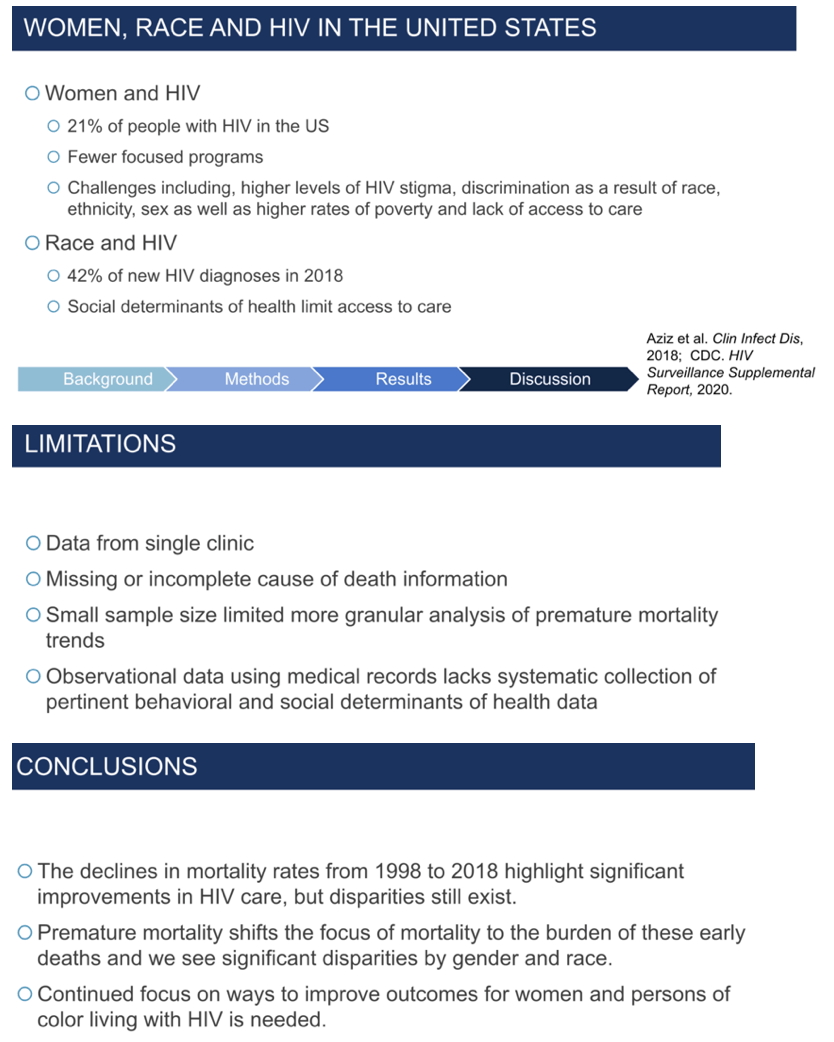
author said "many programs on prevention & awareness focus on the MSM community". For Black americans...factors such as mistrust in the healthcare system, stigma associated with HIV, as well as social & economic factors play a significant role in these differences. this is seen in the recent CDC report showing greater race disparities of HIV diagnoses in areas with hugger percent of individuals levin below the federal poverty level.
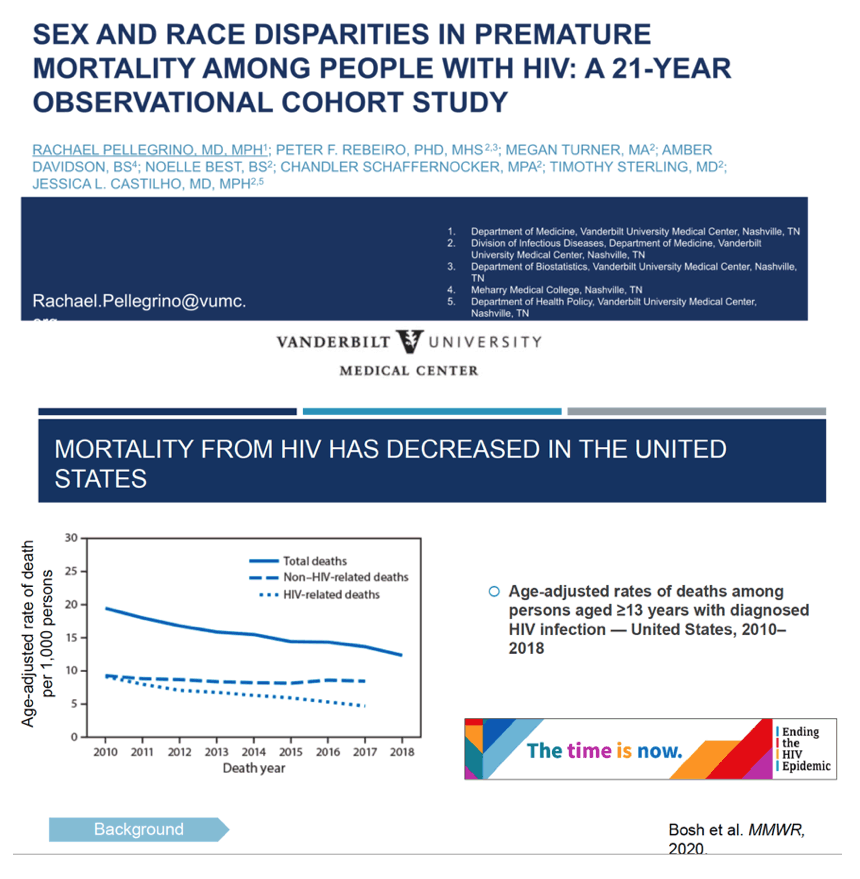
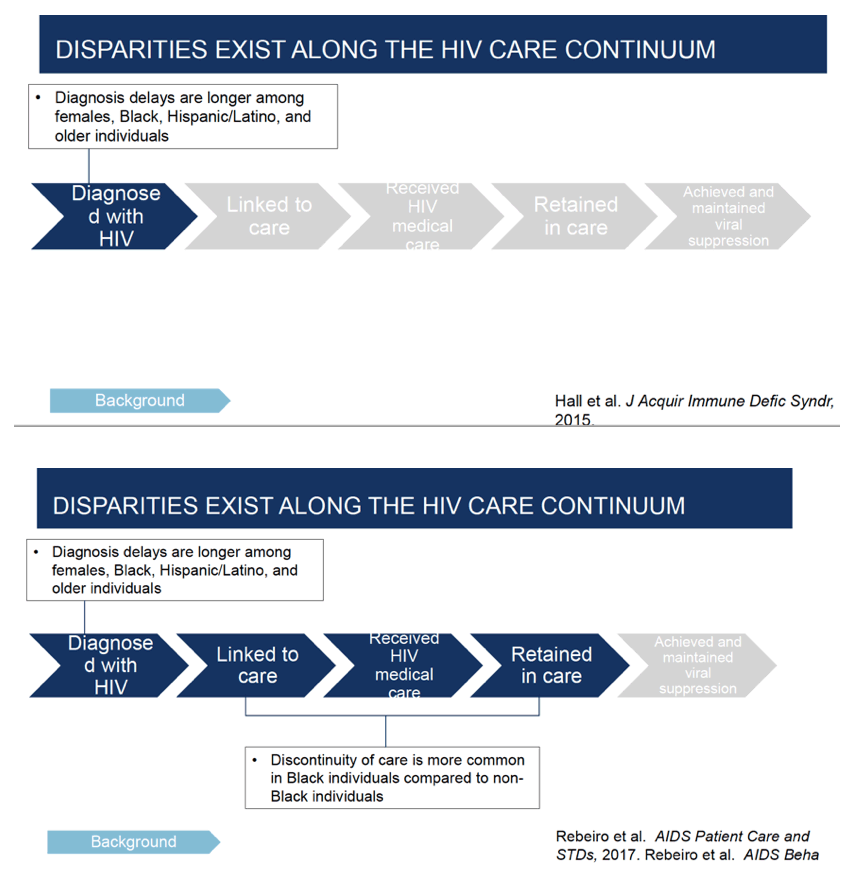
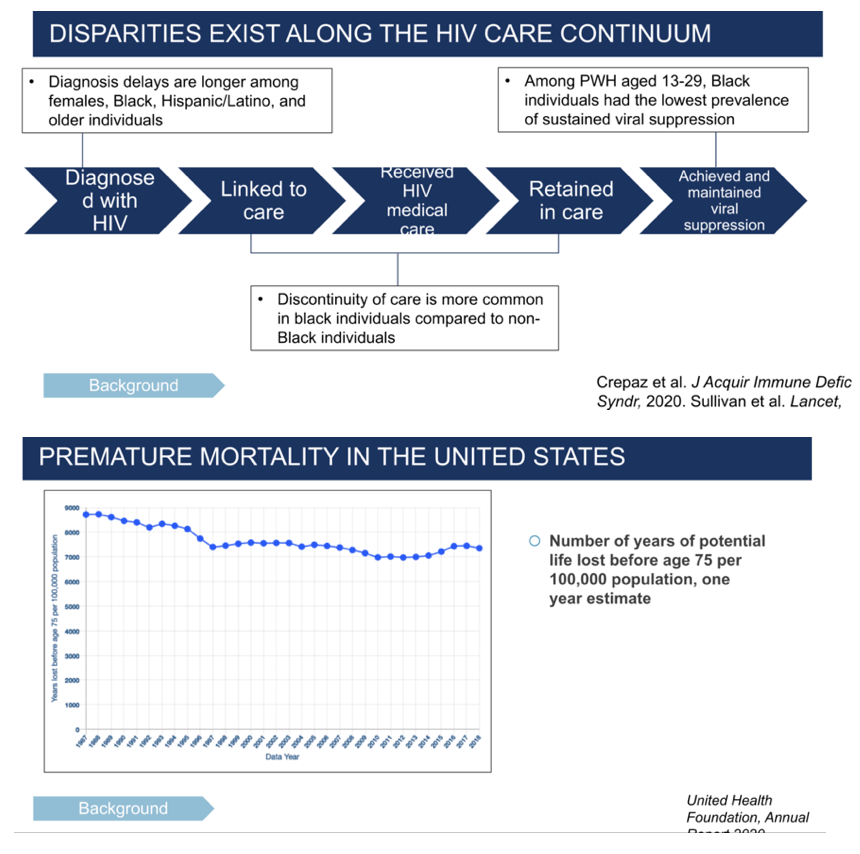
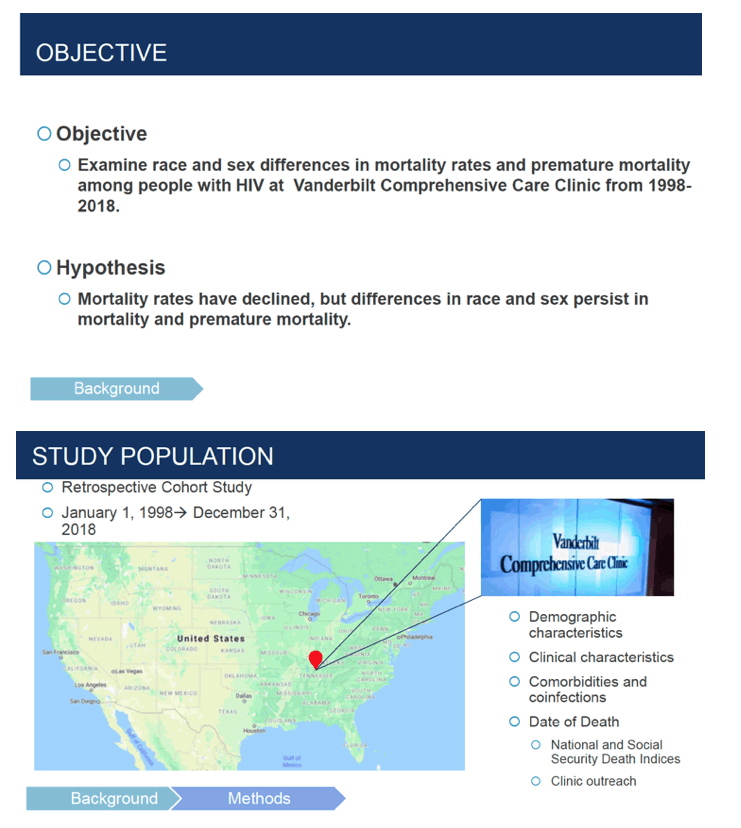
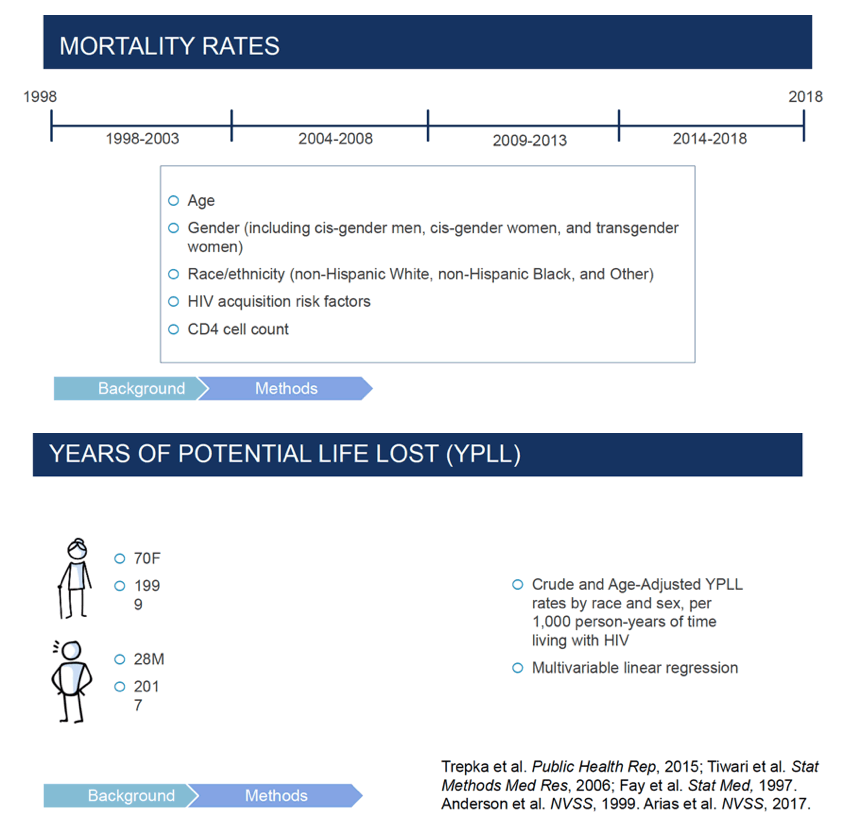
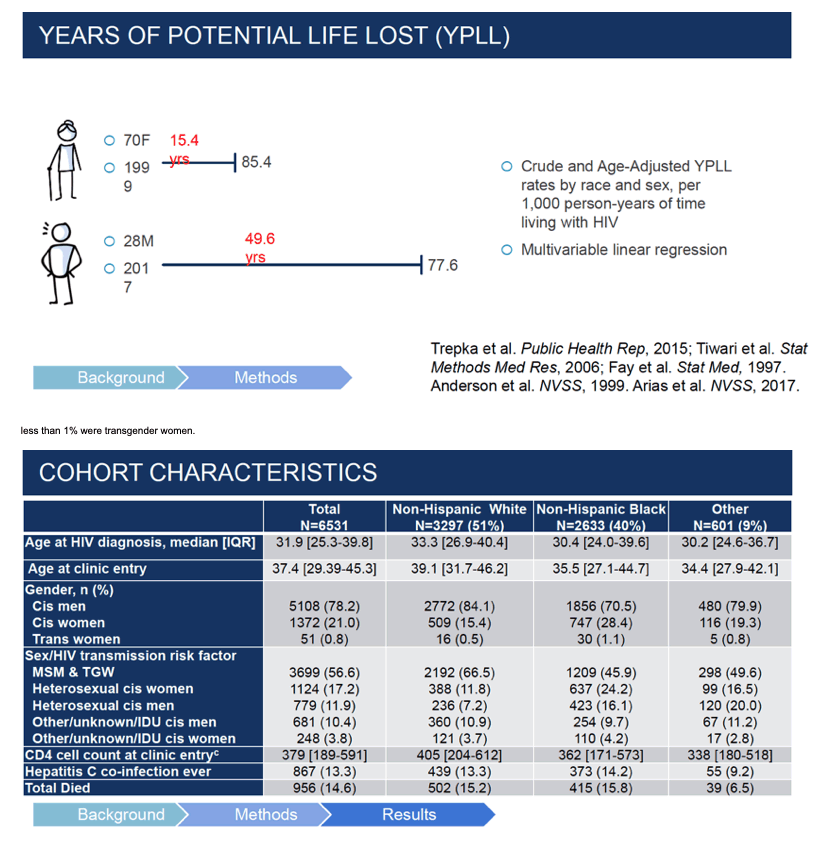
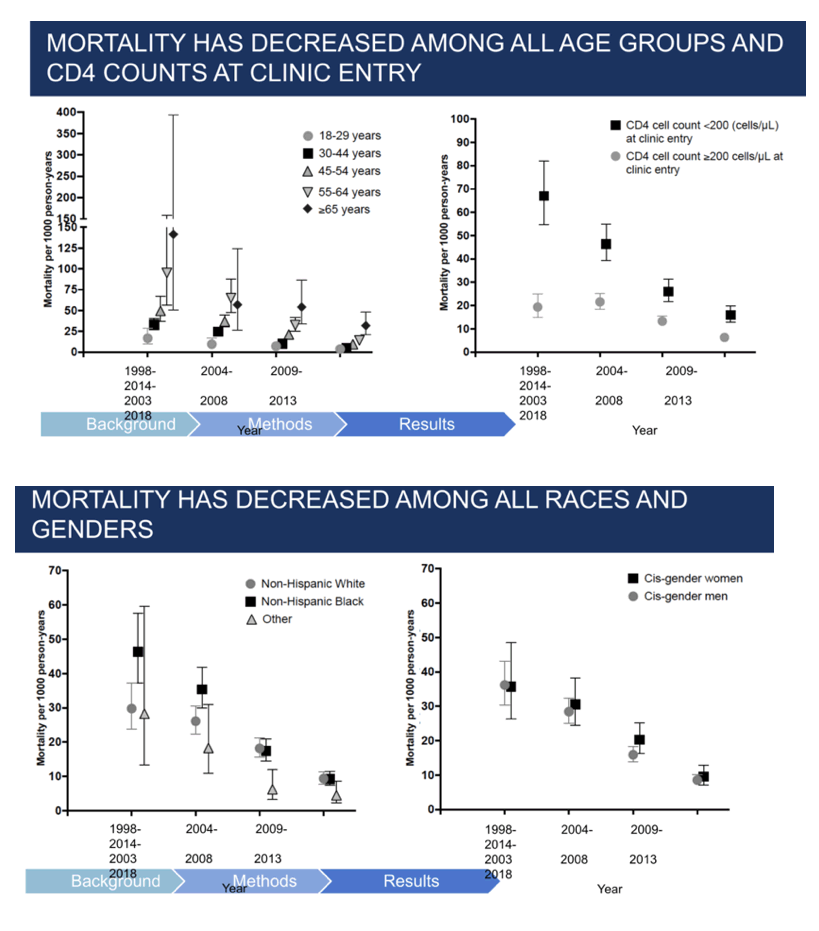
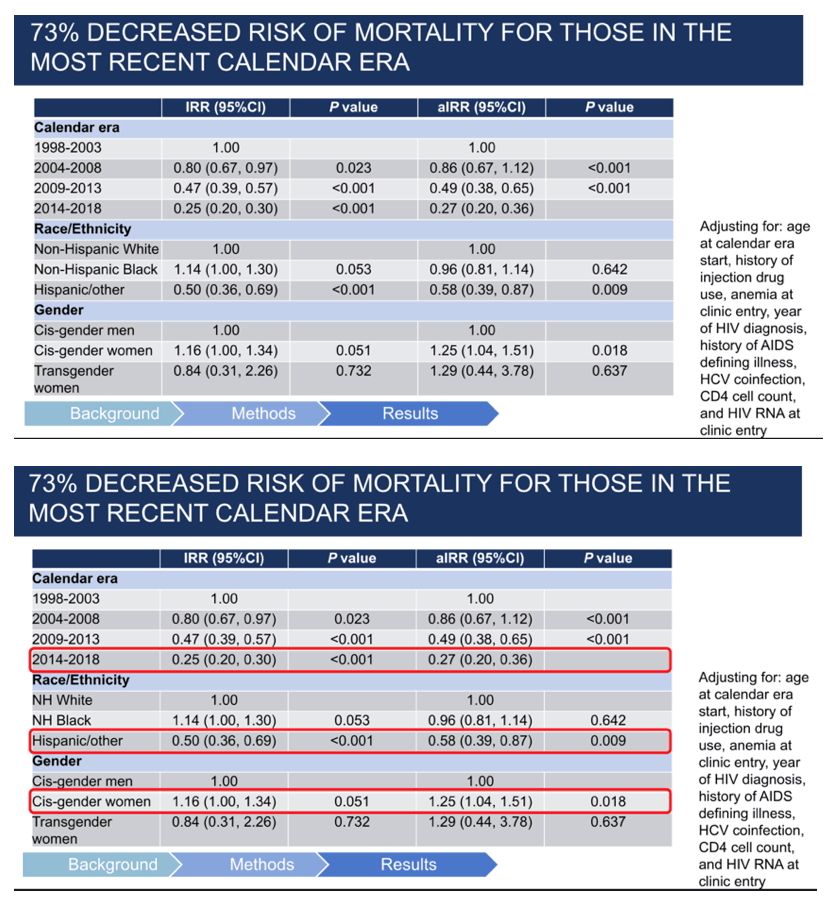
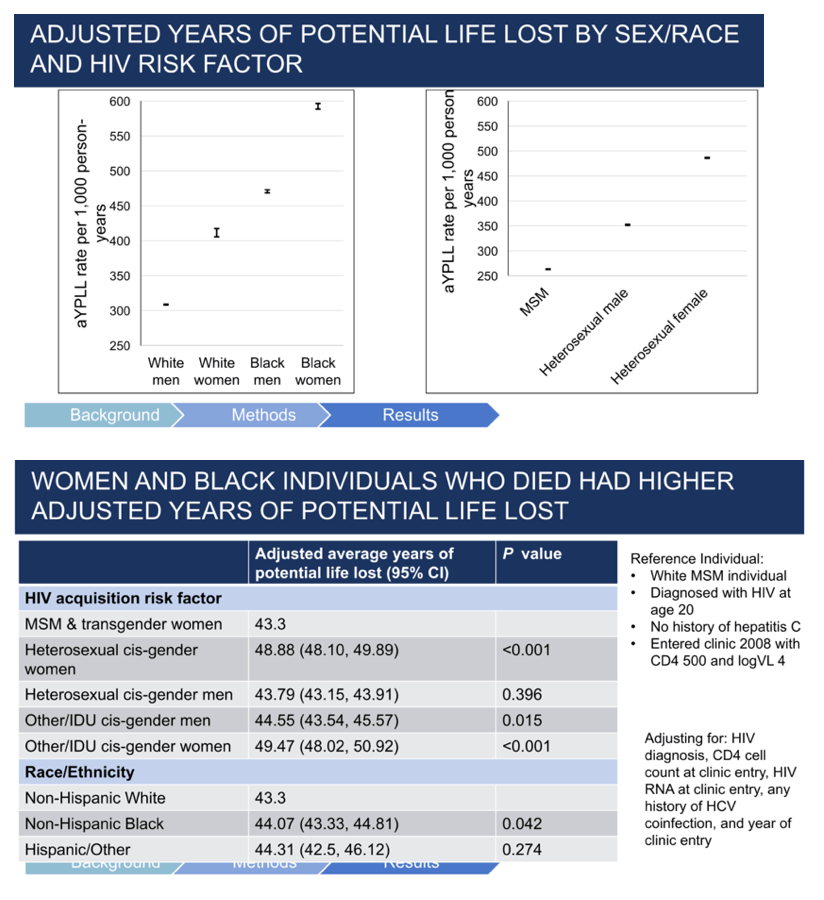

|
| |
|
 |
 |
|
|